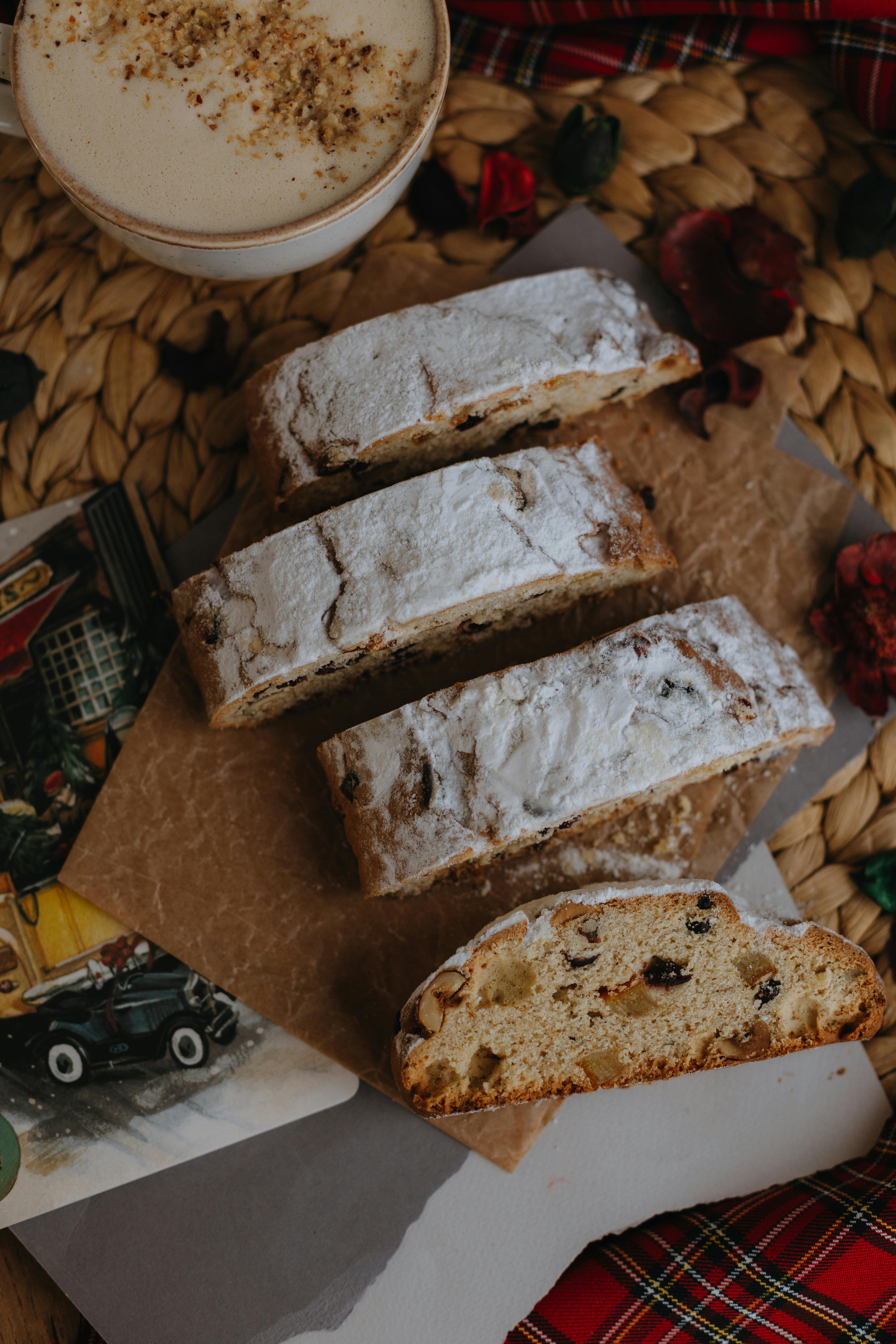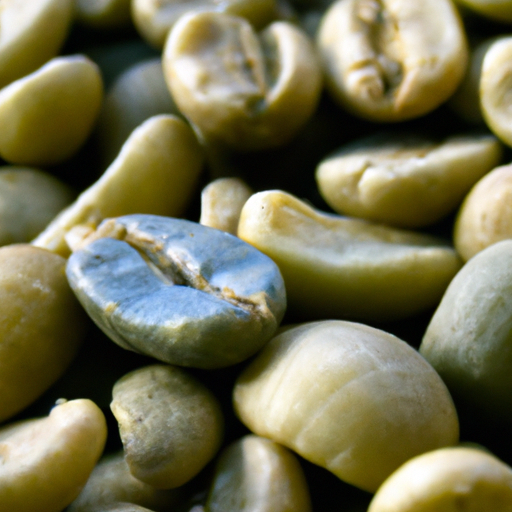At HopaCoffee.com, we are passionate about enhancing your coffee journey. Our mission is to provide you with the finest coffee blends and flavors that are guaranteed to enliven your mornings and fulfill your coffee desires. With our curated selection, you can explore a myriad of exceptional coffees that are just a click away. Join us as we embark on an exploration of the intricacies behind the science of coffee bean roasting levels. Get ready to delve into the fascinating world of coffee essentials, where we unravel the mysteries and secrets that make your coffee experience truly extraordinary.

The Green Coffee Bean
The coffee bean before roasting
When we talk about coffee, we often imagine the aromatic and rich cup of coffee that we enjoy each morning. However, before coffee beans transform into the delicious beverage we love, they start as green coffee beans. Green coffee beans are the raw, unroasted seeds of the coffee plant. They are small, hard, and have a greenish hue. Green coffee beans are packed with potential, waiting to be unlocked through the roasting process.
Chlorogenic acids in green coffee beans
One of the key components of green coffee beans is chlorogenic acids. These are natural compounds that are believed to have numerous health benefits. Chlorogenic acids are known antioxidants, which means they help to neutralize harmful free radicals in our bodies. They are also believed to have anti-inflammatory properties and may contribute to weight loss. Green coffee beans have a higher concentration of chlorogenic acids compared to roasted coffee beans since they get partially broken down during the roasting process.
The Roasting Process
Introduction to coffee bean roasting
Roasting is the process that transforms green coffee beans into the flavorful beans we know and love. It involves applying heat to the beans, which causes chemical reactions that bring out their unique flavors and aromas. Roasting is an art and a science, with different roast levels yielding different characteristics in the final cup of coffee.
The importance of temperature and time in roasting
Temperature and time play critical roles in the roasting process. The temperature determines how fast the beans roast and the chemical reactions that take place. The time the beans spend in the roaster affects the flavor and aroma profile. Roasting at a lower temperature for a longer time tends to result in a lighter roast, whereas higher temperatures and shorter times produce darker roasts.
The Maillard reaction
During the roasting process, the Maillard reaction occurs. This chemical reaction between amino acids and sugars gives coffee its bittersweet, caramelized flavors and distinctive aroma. It is responsible for the rich and complex flavors that develop in a roasted coffee bean.
The art and science of coffee bean roasting
Roasting coffee beans is a delicate balance between art and science. Roasters carefully monitor the temperature and time to bring out the best flavors and aromas from each batch of beans. They rely on their skill and experience to create a roast that maintains the integrity of the coffee while enhancing its unique character.
Different roasting methods
Roasters have developed various methods to achieve different roast levels. Some common roasting methods include drum roasting, air roasting, and fluid bed roasting. Each method offers different advantages and allows roasters to create a range of flavors and profiles. These methods, combined with the selection of the right coffee beans, contribute to the diverse world of coffee roasting.
Light Roast
Characteristics of light roast coffee
Light roast coffee beans are roasted for a shorter time and at lower temperatures compared to other roast levels. This results in a lighter color and a higher acidity level in the beans. Light roast coffee is known for its bright, delicate flavors and floral or fruity aroma. It retains the most natural characteristics of the coffee bean and showcases its subtle nuances.
The impact of roasting on acidity and flavor
The light roast level preserves the natural acidity of the coffee bean, giving it a lively and tangy taste. The shorter roasting time allows the flavors to remain prominent, resulting in a coffee that is vibrant and complex. Light roast coffee often exhibits flavors such as citrus, berries, and floral notes. It is a popular choice for those who prefer a lighter and more nuanced cup of coffee.
Popular light roast coffee beans
Some popular light roast coffee beans include Ethiopian Yirgacheffe, Costa Rican Tarrazu, and Colombian Supremo. These beans are known for their bright acidity, distinct flavors, and a clean finish. They offer coffee lovers a delightful sensory experience with their vibrant and complex profiles.
Medium Roast
Characteristics of medium roast coffee
Medium roast coffee beans are roasted for a slightly longer time and at a higher temperature compared to light roast beans. This results in a darker color, a balanced acidity level, and a fuller body in the cup. Medium roast coffee strikes a perfect balance between the vibrant flavors of light roast and the rich, caramelized flavors of dark roast.
Balancing acidity and richness in medium roast
Medium roast coffee beans have a well-rounded acidity that is both bright and smooth. The longer roasting time enhances the sweetness and brings out deeper flavor notes. Medium roast coffees often display flavors of chocolate, caramel, and nuts. They offer a pleasant combination of complexity and harmony, making them a popular choice for many coffee enthusiasts.
Popular medium roast coffee beans
Some popular medium roast coffee beans include Colombian Medellin, Guatemalan Antigua, and Brazilian Santos. These beans are known for their balanced acidity, richness, and versatility. They produce consistently satisfying cups of coffee that cater to a wide range of taste preferences.

Dark Roast
Characteristics of dark roast coffee
Dark roast coffee beans go through a longer and higher-temperature roasting process. This extended roasting period transforms the beans into a deep brown color and imparts rich, bold flavors. Dark roast coffee is characterized by its low acidity, heavy body, and smoky or charred aromas.
The effects of prolonged roasting on flavor
Dark roast coffee beans have a more pronounced bitterness and reduced acidity compared to lighter roasts. The extended roasting process brings out flavors of cocoa, dark chocolate, and even hints of burnt sugar. The smoky undertones add depth and complexity to the cup.
Popular dark roast coffee beans
Some popular dark roast coffee beans include Italian Roast, French Roast, and Vienna Roast. These beans are known for their bold and intense flavors. They provide a robust and satisfying coffee experience, particularly enjoyed by those who appreciate stronger and more pronounced tastes.
French Roast
The darkest roast level
French roast is the darkest level of roasting, characterized by its shiny, almost oily appearance and dark brown or black color. It is a bold and powerful roast known for its strong flavor profile.
Distinctive characteristics of French roast coffee
French roast coffee is full-bodied and has a smoky, intense flavor. The extended roasting process gives it a bitter-sweet taste, with notes of dark chocolate and caramelized sugar. The strong flavors and low acidity make French roast coffee a favorite among those who prefer a more robust and potent cup of coffee.
Recommended brewing methods for French roast
Due to its bold and intense flavor, French roast coffee pairs well with brewing methods that can extract the maximum flavor from the beans. French press, espresso, and cold brew methods are popular choices for brewing French roast coffee. These methods allow the flavors to shine through while providing a rich and satisfying coffee experience.

Italian Roast
An in-depth look at Italian roast coffee
Italian roast coffee is a level of roasting that is between a dark and a very dark roast. It is characterized by its deep, almost black color and shiny appearance. Italian roast coffee is known for its strong and robust flavor profile.
The intense flavor profile of Italian roast
Italian roast coffee possesses a full-bodied and bold flavor. The extended roasting process creates a strong and bitter taste, with notes of dark chocolate, smokiness, and slight caramelization. The low acidity and strong flavors make Italian roast coffee a popular choice among espresso enthusiasts.
Best coffee brewing techniques for Italian roast
Italian roast coffee is commonly used for espresso-based beverages. The strong flavors of Italian roast coffee pair well with milk, creating a rich and velvety espresso shot that forms the base of drinks like cappuccinos and lattes. Italian roast coffee can also be enjoyed as a strong black coffee using methods like espresso machines or Moka pots.
Vienna Roast
Exploring Vienna roast coffee
Vienna roast coffee represents a level of roasting that is slightly darker than medium roast but lighter than dark roast. It is characterized by its deep brown color with a hint of oil on the surface.
Balancing sweetness and dark roast flavors
Vienna roast coffee strikes a balance between the sweetness of lighter roasts and the intense flavors of darker roasts. The longer roasting time results in a rich and mellow taste with subtle sweetness. Vienna roast coffee often exhibits flavors of dark chocolate, caramel, and toasted nuts.
Recommended brewing techniques for Vienna roast
Vienna roast coffee is versatile and can be enjoyed using various brewing methods. It is well-suited for brewing methods like drip coffee, pour-over, and French press. These methods allow the natural flavors of Vienna roast coffee to shine while maintaining a smooth and well-rounded cup.
City Roast
Definition and characteristics of City roast coffee
City roast is a medium roast level, slightly lighter than medium-dark roast. It is characterized by its medium brown color, with a hint of oil on the surface. City roast strikes a balance between preserving the unique characteristics of the coffee bean and developing more complex flavors.
The importance of individual bean quality in City roast
City roast highlights the distinctive flavors of different coffee beans. It allows the flavors to shine through without overpowering them with the intensity of darker roasts. With City roast, the quality and origin of the beans become crucial factors in the final cup.
Ideal brewing methods for City roast
City roast coffee can be enjoyed using a variety of brewing methods, such as drip coffee, pour-over, or AeroPress. These methods allow for precision and control, bringing out the delicate flavors of City roast coffee. The result is a well-balanced and nuanced cup of coffee.
Full City Roast
Full City roast explained
Full City roast falls between medium-dark and dark roast levels. It is characterized by its dark brown color, often with a slight sheen of oil on the surface. Full City roast offers a balance between the flavors of medium roasts and the richness of dark roasts.
Balancing sweetness and aroma in Full City roast
Full City roast coffee exhibits a well-rounded flavor profile with a balance of sweetness, acidity, and aroma. The longer roasting time brings out the richness and enhances the sweetness, giving it a pleasant caramelized taste. Full City roast often displays flavors of cocoa, nuts, and spices.
Recommended brewing techniques for Full City roast
Full City roast coffee can be enjoyed using various brewing methods, such as drip coffee, pour-over, or espresso. These methods bring out the complex flavors of Full City roast while maintaining a smooth and balanced cup. It allows the coffee to showcase its inherent qualities and provides a satisfying coffee experience.
In conclusion, the journey of a coffee bean from its green state to different roast levels is an intricate and fascinating process. Each roast level brings unique characteristics and flavor profiles to the coffee, ultimately providing us with a diverse range of coffee experiences. Whether you prefer the vibrant and nuanced flavors of light roast, the balance and richness of medium roast, or the boldness of dark roast, there is a roast level that suits your taste preference. So, next time you sip your favorite cup of coffee, take a moment to appreciate the art and science behind the roasting process and the incredible flavors that come from a humble little bean.

